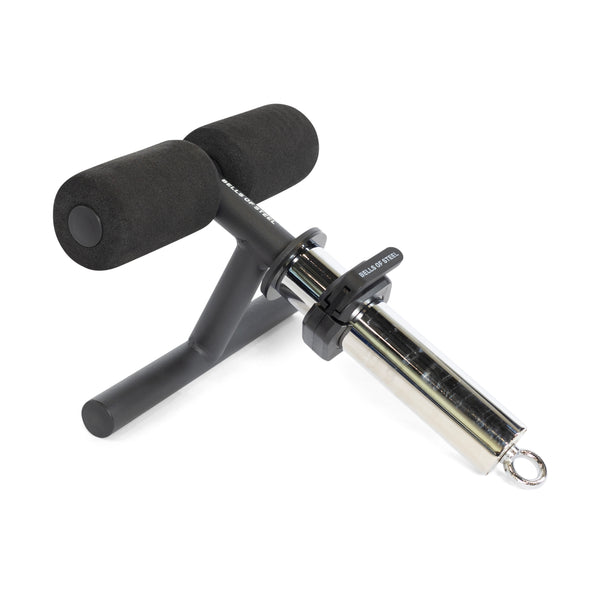If you want to enhance your athletic performance, strengthen your lower leg muscles, and prevent injuries, it’s time to focus on an often-overlooked muscle: the tibialis anterior.
When performed with a tibialis trainer bar or tibialis machine, the tib raise is the ultimate exercise to strengthen this critical muscle. Let’s dive into how to perform a tibialis raise effectively and why this exercise should be part of your routine.
Don’t have a Tib Bar? No worries! Check out How To Do Tib Raises Without a Tib Bar: 5 Home Gym Hacks
What Is a Tibialis Raise?
The tibialis raise targets the tibialis anterior, the muscle running along the front of your shin. This muscle plays a vital role in ankle dorsiflexion (lifting your toes toward your shin) and stabilizing your knees and ankles during activities like running, jumping, or hiking.
Strengthening the tibialis anterior improves balance, reduces the risk of shin splints, and enhances overall lower-body durability.
How to Do a Tibialis Raise with a Tib Bar
Using a Tib Bar takes your tib raises to the next level by allowing progressive overload and customization with various resistance methods. Follow these steps:
1. Set Up the Tib Bar:
- Load your desired weight onto the Tib Bar. The Bells of Steel Tibialis Trainer Bar accommodates Olympic plates, resistance bands, or even a cable machine for endless versatility!
2. Position Your Feet:
- Sit on a bench with the Tib Bar secured around your feet. Ensure the padding is snug to avoid slipping.
- Place your heels on an elevated surface like a step or weight plate, keeping your toes free to move.
3. Perform the Movement:
- Slowly lift your toes toward your shin as far as possible, flexing the tibialis anterior.
- Lower your toes back to the starting position in a controlled manner, avoiding any jerky movements.
4. Repetition and Progression:
- Aim for 3-4 sets of 15-20 reps to start. Gradually increase the resistance as you build strength.
Pro Tip: Use a resistance band for additional tension or attach the Tib Bar to a cable machine for a unique training stimulus.
Advantages of Using a Tib Bar
- Progressive Overload: Easily adjust the resistance with weights, bands, or cables.
- Customization: The Bells of Steel Tibialis Trainer Bar allows diverse setups for personalized workouts.
- Compact and Durable: Perfect for home gyms with limited space.
- Enhanced Performance: Strengthen your tibialis anterior for better running, jumping, and overall stability.
How to Do a Tibialis Raise with a Tib Raise Machine
If you have access to a tib raise machine, it offers a straightforward and effective alternative. Here’s how to use it:
1. Adjust the Machine:
- Set the foot platform at a comfortable height, ensuring your toes can move freely without obstruction.
- Add weight plates that match your current strength level.
2. Perform the Exercise:
- Place your feet under the padded lever with your heels on the foot platform.
- Dorsiflex your ankles by lifting your toes toward your shin.
- Lower your toes slowly back to the starting position.
3. Repetition and Progression:
- Perform 3-4 sets of 12-15 reps. Gradually increase the resistance as your tibialis anterior strengthens.
Pro Tip: Focus on a full range of motion to maximize muscle activation and prevent imbalances.
Advantages of the Tib Raise Machine
- Ease of Use: The machine simplifies the setup process, making it user-friendly for beginners.
- Consistency: Fixed resistance ensures controlled, uniform movements.
- Joint Support: Designed to minimize strain on the ankles and knees.
Final Thoughts
Incorporating tibialis raises into your fitness routine is a game-changer for lower leg strength, injury prevention, and athletic performance. Whether you prefer the versatility of a Tib Bar or the simplicity of a tib raise machine, there’s an option for everyone.
For home gym enthusiasts, the Bells of Steel Tibialis Trainer is a must-have piece of equipment. Its ability to accommodate various resistance methods ensures you’ll never outgrow your tibialis training.



